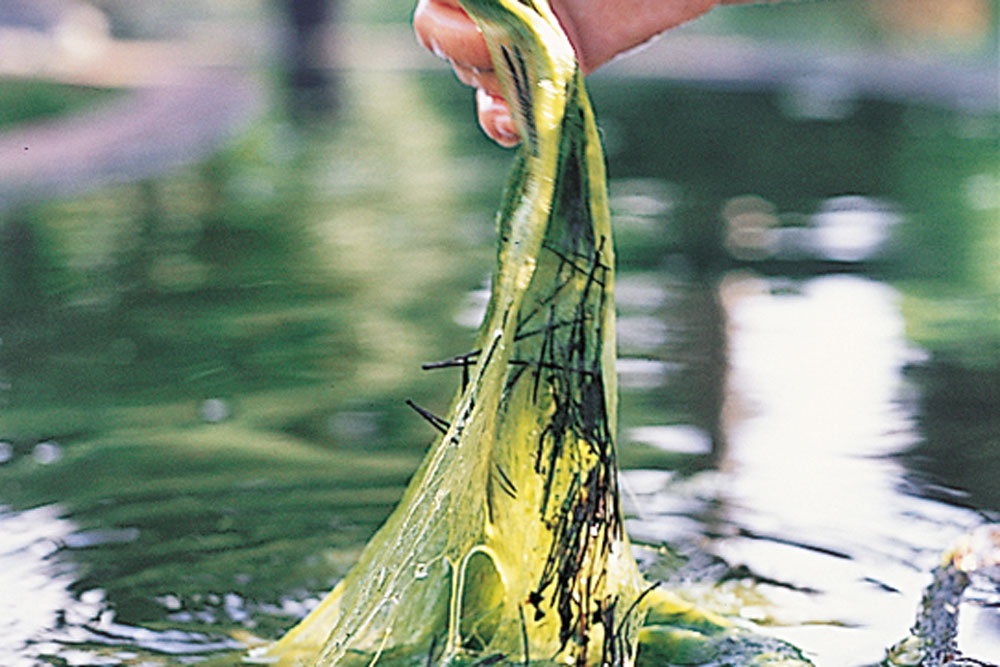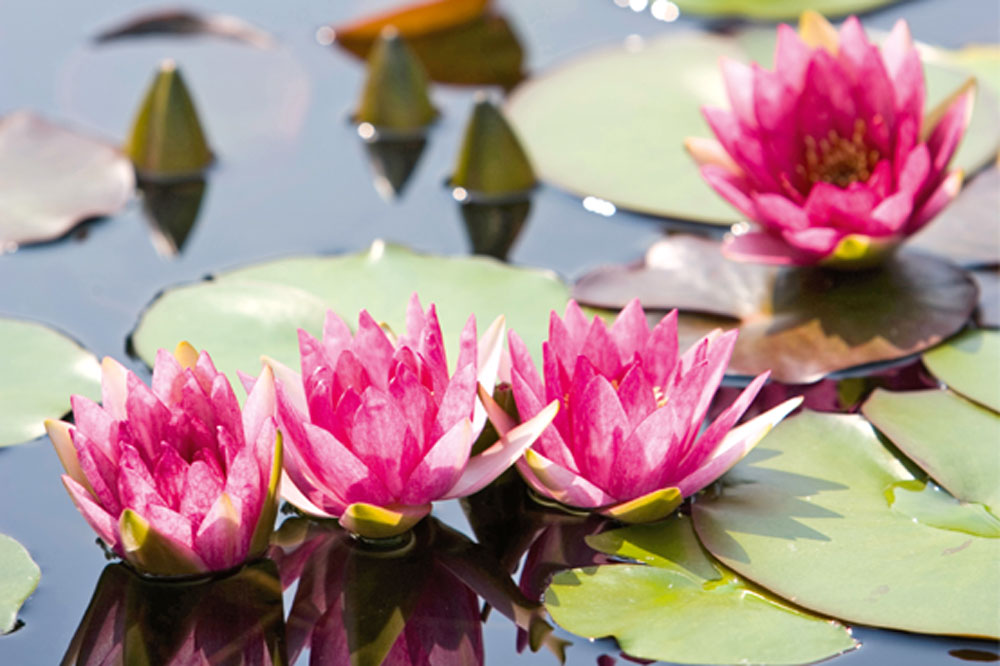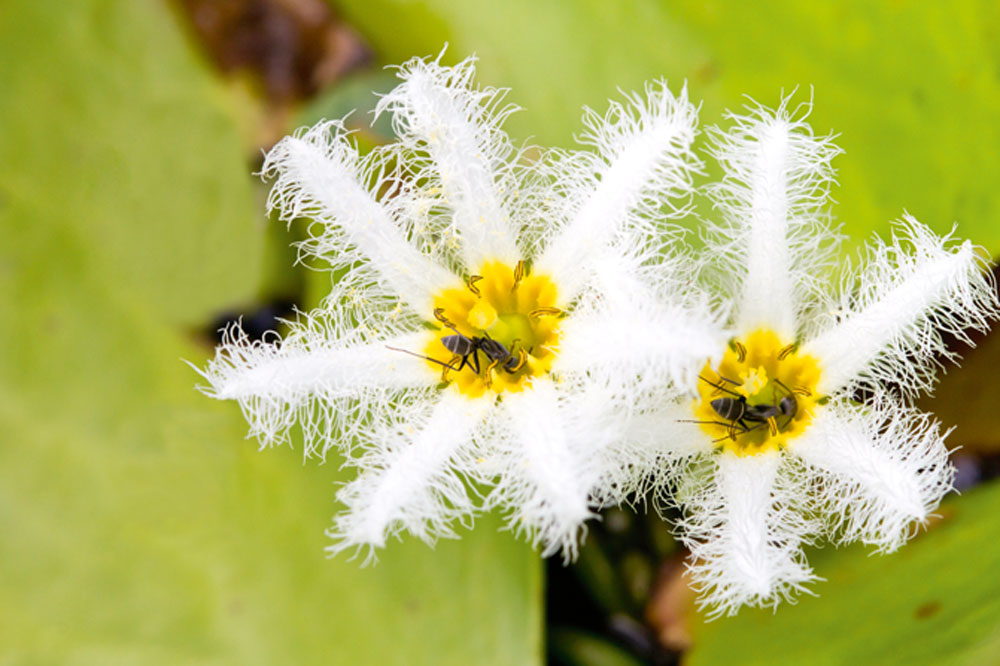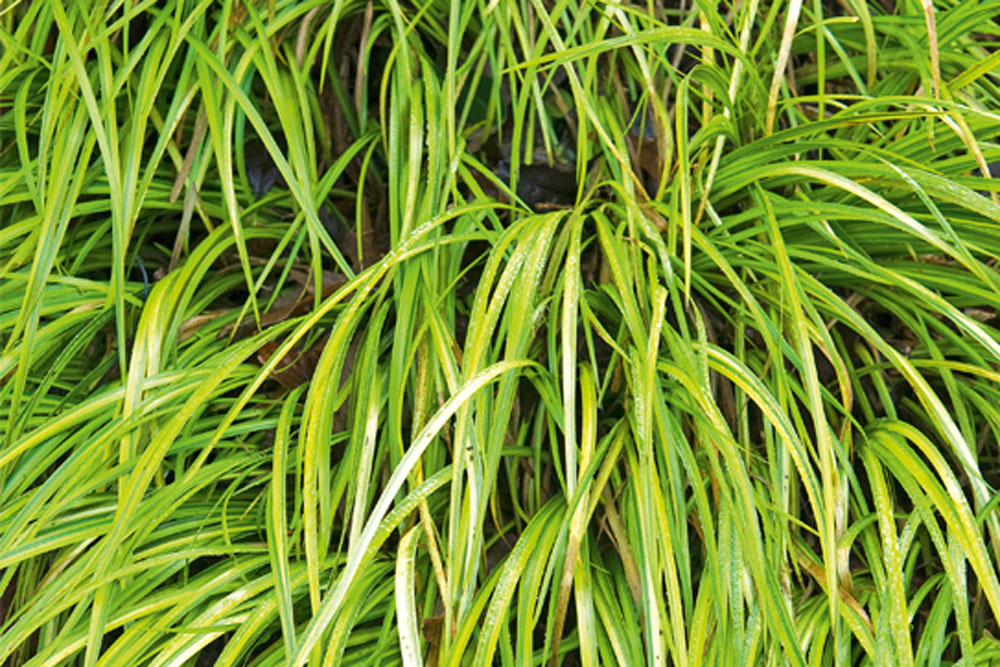Planting A Pond

Give your water garden a little maintenance now for a lush display throughout the summer months.
Late spring is when the water temperature begins to rise and marks the beginning of the year for pond plants.
There are five types of pond plants. Deep-water varieties grow over 400mm deep, shallow from 200 to 400mm, and marginal at 200mm. Bog plants grow around the edge and floating aquatic plants sit on the water’s surface.
A good balance of plant types will stabilise water temperature, reduce evaporation and algae, oxygenate the water, provide shade and shelter for pond life, and help control erosion.
For an easy-care pond, grow deep and shallow water plants plus marginal plants in rigid plastic mesh baskets.
TIP Always use a specially formulated aquatic potting mix for water plants.
Keep it healthy
To maintain the delicate balance of life in your pond, now is the time to control rampant water plants and ensure part of the surface is kept clear.
DIVIDE PLANTS that are overgrown or old, creating healthy young plants.
TOP UP the gravel in the baskets of submerged plants to weigh them down.
CLEAR weeds from one-third of the water surface. Use a rake to drag out big layers of blanket weed, leaving it on the side overnight to give water snails and beneficial insects a chance to crawl back into the pond.
TRANSPLANT aquatic plants while
in active growth to give them a long time to establish in their new position before the onset of winter weather.
GROW oxygenating plants from 150mm long tip cuttings. Tie eight together at the base then plant each bunch, with the string buried, at the bottom of the pond.
PLANT three bunches of oxygenating plants for every square metre of pond. They absorb minerals and carbon dioxide in the water and are essential to maintain its clarity and quality.
ADD floating plants like native bladderwort and fairy moss to the surface to provide shade and stop the build-up of algae and blanket weed.

Once removing blanket weed, leave it on the side overnight giving water snails and beneficial insects a chance to crawl back into the pond
Choosing a variety
Most backyard ponds are created using a preformed shell or dug to a uniform depth, so their needs are simple. Use deep or shallow water plants that can be planted about 300mm down, and bog varieties around the edge for landscaping.
Deep water
- Water lily
- Lotus
- Water hawthorn
- Water violet

Water lilies are a great deep water plant option. Image: Thinkstock
Shallow water
- Water snowflake
- Tall spike rush
- Water poppy
- Ribbon grass

Water snowflake flowers get their name from the delicate fringing on their petals. Image: Thinkstock
Pondside
- Japanese sweet flag
- Canna tropicanna
- Elephant ears
- Water buttons

Plant Japanese sweet flag around the edge of your pond. Image: Getty Images
How to plant water lilies
Water lilies are deep-water plants that need a pond depth of 450 to 600mm or more. To pot up for a water garden, trim the fibrous roots and cut off any dead or rotted sections of the stem or rhizome.





